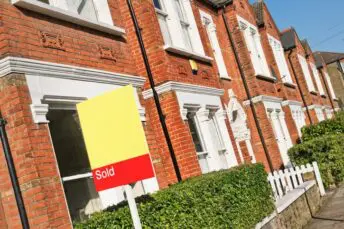House Price Watch Jan 2025
Most of the indices report a strong start to market activity in 2025. New sales listings are up 10% on last year and demand for new mortgages remains high in spite of ongoing affordability pressures. Whether momentum will be sustained is uncertain -- softening consumer confidence given the economic outlook and higher stamp duty costs from April could impact buyer demand. With this backdrop and a healthy supply of homes for sale, house price growth is expected to be restrained in the months ahead.
What’s happening nationally
House prices were up on average +0.2% over the past month and+3.9% over the past year.
Land Registry (-0.1%), Nationwide (+0.1%) and Halifax (0.7%) reported relatively stable house prices over the past month, while Rightmove reported an increase of +1.7% in January asking prices. All of the indices recorded an increase in annual house price growth: Rightmove asking prices up +1.8%, Halifax up +3%, Nationwide up 4.1% and Land Registry reporting December figures up 4.6%.
Indices based on:
Land Registry – registered property transactions in December.
Nationwide & Halifax – mortgage valuations in January.
Rightmove – asking prices posted on Rightmove in January.
*Rightmove is not included in the index average as the basis for its index is different (asking price vs agreed sale price)
| Index reports: | Monthly change | Annual change |
|---|---|---|
| Land registry | -0.1% | +4.6% |
| Nationwide | +0.1% | +4.1% |
| Halifax | +0.7% | +3.0% |
| Rightmove | +1.7% | +1.8% |
| Average change | +0.2% | +3.9% |
House prices in your area
House prices were relatively stable over the past month in all areas (with houses prices slightly up or slightly down across the country).
Over the last year, house prices have increased in all areas except London (where prices remained static). The biggest rises over the past year were in Northern Ireland (+9%), Scotland (+6.9%), the North East (+6.7%), Yorkshire & Humber (+5.9%) and the North West (+5.4%). There was slightly slower house price growth in Wales (3%), the South West (3.8%) South East (4.4%) and East of England (4.4%).
Average house prices remain highest in London (£549K) and lowest in the North East (£161K)
House prices increased in the last year for semi-detached properties (+5.6%), detached properties (+5.2%), terraced (+4.9%), and flats/ maisonettes (2.3%) (Land Registry December data).
| UK Region | Average price £ | Monthly change | Annual change |
|---|---|---|---|
| England | |||
| Nothern Ireland | |||
| Scotland | |||
| Wales | |||
| North West | |||
| Yorkshire and The Humber | |||
| North East | |||
| West Midlands | |||
| East Midlands | |||
| South West | |||
| East of England | |||
| South East | |||
| London |
| UK City | Average price | Annual change |
|---|---|---|
Market Monitor
2024 finished with completed annual transactions up 7% versus 2023 (1.093 million vs 1.023 million).
December transactions (96K) were up 3% on November (93K) and up 19% on December 2023 (81K) – when transactions were at near record lows. Zoopla reports that early activity is up on the same period last year with 12% more sales agreed.
The level of new buyer enquiries was steady in January (0%). New listings were up in January. Both Rightmove and Zoopla report that there are approximately 10% more homes for sale than a year ago.
However, the average time to secure a buyer has now increased to 77 days according to Rightmove (January data), up from the 12 month average of 64 days.
How busy is the market?
- Not busy
- Normal
- Very busy
- Transactions up slightly in December
- Total transactions in December 2024 96K
- +3% from last month
- +19% from Dec last year
Homes for sale vs homebuyers
- Good availability of homes
- Normal
- Shortage of homes
- Buyer enquiries flat(0% RICS Jan data)
- Seller instructions up (+25% RICS Jan data)
- Average stock per agent 56 in Jan; down from peak of 63 in Sept/ Oct (incl under offer/ Sold STC Rightmove)
Average speed of sale
- Fast
- Normal
- Slow
- Jan figure: 77 days to find a buyer above the 12 month average of 64 days Rightmove
What the experts say
Rightmove

“The number of new properties coming to market is 11% ahead of the same start-of-the-year period last year and the number of buyers contacting agents about properties for sale is 9% ahead of last year. However, despite the promising start to 2025 there are uncertainties ahead, including the pace and number of interest rate drops and the impact of the stamp duty deadline on the 31st of March. Mortgage rates remain sticky, blocking many buyers from significant affordability improvements.”
Nationwide

“The housing market continues to show resilience despite ongoing affordability pressures. While there has been a modest improvement over the last year, affordability remains stretched by historic standards. A prospective buyer earning the average UK income and buying a typical first-time buyer property with a 20% deposit would have a monthly mortgage payment equivalent to 36% of their take-home pay – well above the long-run average of 30%. Furthermore, house prices remain high relative to average earnings, with the first-time buyer house price to earnings ratio standing at 5.0 at the end of 2024, still well above the long run average of 3.9.”
Zoopla (Hometrack)

“The momentum in sales market activity from 2024 has spilled over into 2025 despite concerns over mortgage rates drifting higher and some softening in consumer confidence over the economic outlook. Buyer demand is 13% higher than a year ago, with 10% more homes for sale and 12% more sales agreed. While there is speculation that demand may cool after stamp duty costs rise from April 2025, we find that there is an increased appetite amongst consumers to move home in the next 2 years.”
Halifax

“Affordability is still a challenge for many would-be buyers, but the market’s resilience is noteworthy. There’s strong demand for new mortgages and growth in lending. With a stamp duty increase looming, some of this demand may have come from first-time buyers eager to complete transactions before the end of March.”
RICS

“Affordability is still a challenge for many would-be buyers, but the market’s resilience is noteworthy. There’s strong demand for new mortgages and growth in lending. With a stamp duty increase looming, some of this demand may have come from first-time buyers eager to complete transactions before the end of March.”




